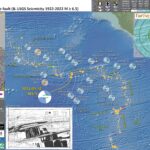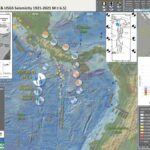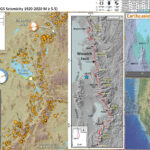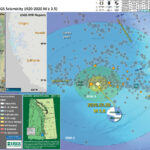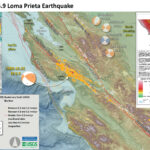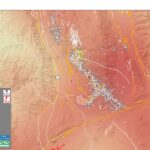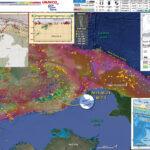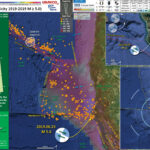There have not been that many large earthquakes this year. This is good for one main reason, there is a lower potential for human suffering. Therefore, there are fewer Earthquake Reports for this year. This morning (my time) there was…
Earthquake Report M 6.7 in Panama
I don’t always have the time to write a proper Earthquake Report. However, I prepare interpretive posters for these events. Because of this, I present Earthquake Report Lite. (but it is more than just water, like the adult beverage that…
Earthquake Report: Mendocino triple junction
Well, it was a big mag 5 day today, two magnitude 5+ earthquakes in the western USA on faults related to the same plate boundary! Crazy, right? The same plate boundary, about 800 miles away from each other, and their…
Earthquake Report: Salt Lake City
As I was waking up this morning, I rolled over to check my social media feed and moments earlier there was a good sized shaker in Salt Lake City, Utah. I immediately thought of my good friend Jennifer G. who…
Earthquake Report: Mendocino fault
I was in Humboldt County last week for the Redwood Coast Tsunami Work Group meeting. I stayed there working on my house that a previous tenant had left in quite a destroyed state (they moved in as friends of mine).…
Earthquake Report: 2010 Haiti M 7.0
This is the ten year commemoration of the 2010 magnitude 7 earthquake in Haiti that caused widespread damage and casualties, triggered thousands of landslides, caused tsunami, triggered a turbidity current, and caused thousands to be internally displaced. https://earthquake.usgs.gov/earthquakes/eventpage/usp000h60h/executive Here I…
Earthquake Report: 1989 Loma Prieta!
Well, I prepared this report for the 30th anniversary of the 18 Oct 1989 Loma Prieta M 6.9 earthquake in central California, a.k.a. the World Series Earthquake (it happened during the 1989 World Series game at Candlestick Park in San…
Earthquake Report: Ridgecrest Update #3 Literature Review
I have reviewed a small portion of the literature for the tectonics of the northern Eastern California shear zone, Owens Valley fault, Garlock fault, etc. I have a basic knowledge of this region and have attended several Pacific Cell Friends…
Earthquake Report: Indonesia
I had been making an update to an earthquake report on a regionally experienced M 5.6 earthquake from coastal northern California when I noticed that there was a M 7.3 earthquake in eastern Indonesia. https://earthquake.usgs.gov/earthquakes/eventpage/us600044zz/executive This earthquake is in a…
Earthquake Report: Mendocino triple junction
Well, I was on the road for 1.5 days (work party for the Community Village at the Oregon Country Fair). As I was driving home, there was a magnitude M 5.6 earthquake in coastal northern California. https://earthquake.usgs.gov/earthquakes/eventpage/nc73201181/executive I didn’t realize…

